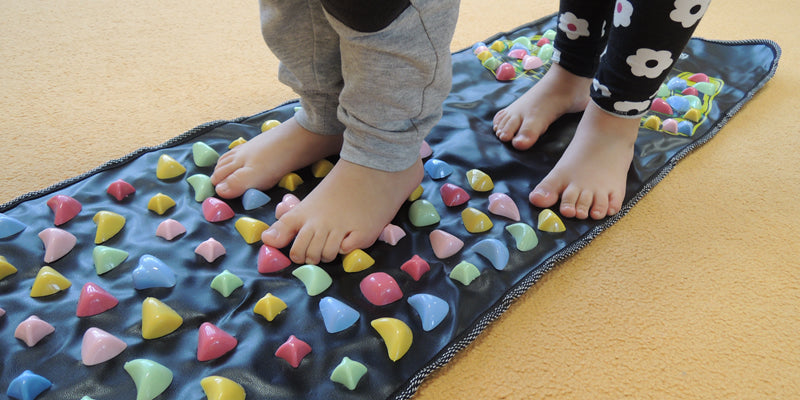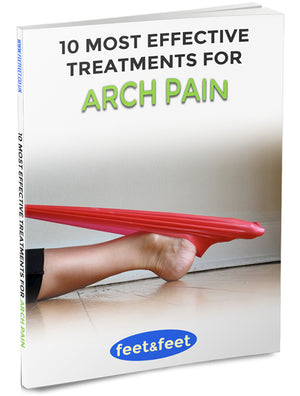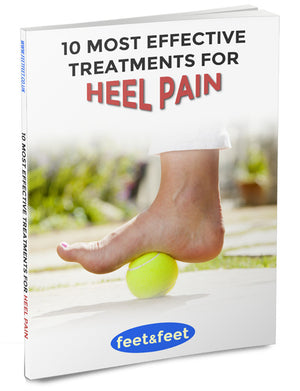Treating Flat Feet in Children and Babies

Flat feet are a postural deformity in which the arches of the foot can collapse, thereby giving the appearance of a flat foot. Usually the entire sole of the foot will come into complete or almost-complete contact with the ground when the individual stands. When this deformity occurs in children, it is known as paediatric flat foot.
There has been a long standing belief that flat foot is always an abnormality which requires treatment or correction through the use of orthotic devices. However it is now becoming evident that flat feet is actually a normal part of development for a majority of children aged between one to five years old.
95% of children with flat feet will usually outgrow the condition by 9 years old and develop a normal arch, and rarely the remaining 5% will become symptomatic.
Although there are multiple forms of flat feet, they will all have one characteristic in common – partial or total collapse of the foot arch. Paediatric flat foot can be classified as symptomatic and asymptomatic;
- Asymptomatic Flat Feet will show no symptoms and the child will not suffer from any pain or discomfort.
- Symptomatic Flat Feet will exhibit symptoms and the child may suffer from pain or even limitation in their range of activity and foot flexibility.
Having a classification system can help doctors and surgeons in determining an appropriate and customised treatment plan. Although it should be pointed out that there has been a long debate over whether children who are asymptomatic require any corrective treatment ‘just in case’ any problems end up developing in the future, but no conclusive answer has been reached as of yet.
What Causes Flat Feet in Children and Babies
Flat feet is caused by a complicated and sophisticated interaction of bones, ligaments, muscles and nerves which are within and surrounding the foot. Anything which interrupts the integrity of any of these structures can lead to a collapsed arch and cause a symptomatic condition of flat feet.
Therefore there can be multiple causes and risk factors which can contribute to development of flat feet in both children and babies such as:
- Hereditary conditions such as Ehlers-Danlos Syndrome or Marfan Syndrome which can cause loose tendons, leading to the development of flat feet.
- Tarsal coalition, a condition in which two or more of the bones in the feet can grow or fuse together.
- Achilles tendon injury, a condition in which the heel tendon is tight and can limit the motion of the child’s foot.
- Medical conditions which affect the joints, such as juvenile arthritis.
- Medical conditions which affect the nerves, such as cerebral palsy or down syndrome.
- Medical conditions which affect the connective tissues, such as joint hypermobility syndrome.
- Foot injuries – Very rarely a severe injury in the foot can result in flat feet.
- Obesity – An excess of body weight can cause an increased load and pressure on the foot causing the arch to flatten.
It is important to note that flat feet in babies and young toddlers will almost always be visible, due to a fat pad in the sole of their foot which can conceal the developing arch.
At this point in development it is very difficult to correctly evaluate whether the child has a flat foot deformity or will suffer any discomfort due to the condition.
Research has also indicated that children who spend more time playing and going barefoot on various terrains will form stronger muscles, tendons, ligaments and bones in their feet and will eventually develop better defined arches in their feet.

Symptoms of Flat Feet in Children and Babies
Young children with flat feet are highly unlikely to suspect or identify the condition by themselves which is why it is a good idea for caregivers to check for flat feet by themselves. Most of the time, paediatric flat feet will not cause any pain or problems however if any of the following symptoms are present in your child, it is advised you see your doctor:
- Pain, tenderness or cramping in the feet, ankles, lower legs or knees.
- The foot arch collapsing inwards or outwards excessively when in motion (a sign of overpronation or supination). This can lead to injuries and shoes that appear to wear out quicker than expected.
- Awkwardness or a change in the way your child walks, even simple foot movements such as standing on tip toes appearing difficult.
- Voluntary withdrawal from physical activities and games, possibly due to your child having reduced energy and feeling tired quickly.
How to Treat Flat Feet in Children and Babies
If your child appears to have a mild flatfoot deformity which is asymptomatic, then generally it is advised that no treatment is given other than annual check-ups with a podiatrist. However if your child is having significant symptoms, enough to cause a decrease in their quality of life, treatment options are available such as:
- Supportive Footwear – High tops or in-shoe inserts which offer padding for the arch can offer more support to the feet and reduce pain.
- Orthotic Devices which can prevent the condition from worsening during walking and running. These devices can also prevent the development of overpronation. It’s important to note that orthotic devices will not change the shape of your child’s foot; however they will maintain the integrity of the foot during physical activity. These devices must be replaced regularly as your child grows until their body reaches skeletal maturity.
- Calf Muscle Stretching Exercises – These exercises are prescribed to children who have overly-tight calf muscles which can worsen flat feet and its symptoms.
If your childs flat foot deformity is severe and does not improve with any of these treatment measures, or is due to neurological or developmental issues, then surgery can be a final option.
If there is abnormal bone development where the bones are fused together or abnormally shaped, surgery can separate or straighten them out. If the condition is due to an issue with connective tissues, then surgery can lengthen or possibly even repair any affected connective tissues.
If your child is displaying symptoms of flat feet or you would simply like some more information on treating flat feet in children or flat feet in babies, you should speak to your doctor or podiatrist for a more customised treatment plan.





Leave a comment